
A primary source account of the executions of Lady Jane Grey and Lord Guildford Dudley on 12 February 1554.
[Read More...]
A primary source account of the executions of Lady Jane Grey and Lord Guildford Dudley on 12 February 1554.
[Read More...]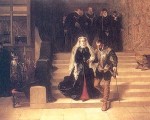
This primary source account of the execution of Mary, Queen of Scots is from Original letters, illustrative of English history; with notes and illustrations, Second Series, Volume III, ed. Henry Ellis (p113-118). Ellis notes that “the present narrative is from the Lansdowne MS. 51. art. 46. It is indorsed in Lord Burghley’s hand, “8 Feb. 1586. The Manner of the Q. of Scotts death at Fodrynghay, wr. by Ro. Wy.””
[Read More...]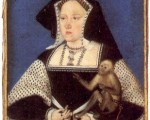
On this day in history, 31st January 1510, Queen Catherine of Aragon gave birth to a still-born daughter. Although she had lost her baby, Catherine’s abdomen stayed rounded and actually began to increase in size, leading her physicians to conclude that she was still pregnant with the twin of the baby she’d lost. This was not true.
I thought it would be interesting to share the primary source account of this event here.
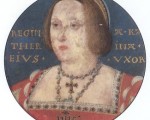
Following Catherine of Aragon’s death on the afternoon of 7th January 1536, her body was prepared for burial by a chandler in her household, whose job it would have been to embalm her body. Sir Edmund Bedingfield and Sir Edward Chamberlain wrote to Thomas Cromwell from Kimbolton on 7th January about the arrangements they had made:
[Read More...]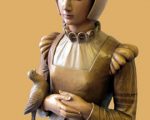
Today, on the anniversary of Anne Line’s execution, on 27th February 1601, I’m honouring her and two other remarkable women, Margaret Clitherow and Margaret Ward, who gave their lives for harbouring Catholic priests in Elizabethan England.
Their crime? Offering sanctuary to men whose very existence had been outlawed. Their fate? Torture, brutal executions, and posthumous sainthood.
But why was it so dangerous to harbour a priest in the reign of Elizabeth I?
In Tudor England, religion wasn’t just a matter of personal belief—it was a matter of life and death.
Following Henry VIII’s break with Rome, England became a Protestant nation. But when his daughter Mary I took the throne, she restored Catholicism and a couple of hundred Protestants burned at the stake. Then, in 1558, Elizabeth I became queen, and England swung back to Protestantism.
Catholics who had hoped for tolerance soon realised that Elizabeth’s government viewed them as a threat. When the Pope excommunicated Elizabeth in 1570, it escalated the conflict. Catholics were now seen as potential traitors—loyal to the Pope, not the queen.
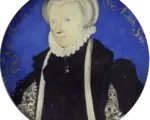
On this day in Tudor history, 19th February 1567, while imprisoned in the Tower of London, Lady Margaret Douglas, Countess of Lennox, received devastating news – her son, Henry Stuart, Lord Darnley, King of Scotland, had been brutally murdered at Kirk o’ Field in Edinburgh.
But this wasn’t just the loss of a son, it was the destruction of her dynastic ambitions, the shattering of her hopes for the future, and yet another chapter of heartbreak in Margaret’s turbulent life.
So, who was Margaret Douglas, why was she in the Tower, and what did this moment mean for her—and for the tangled web of Tudor and Stuart politics?
Margaret Douglas was no ordinary noblewoman, she was a granddaughter of Henry VII, and the daughter of Margaret Tudor (Henry VIII’s sister) and her second husband, Archibald Douglas, 6th Earl of Angus. This made her a first cousin to Edward VI, Mary I and Elizabeth I, and a serious contender for the English throne in the eyes of many.
[Read More...]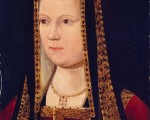
On this day in Tudor history, 11th February 1466, Elizabeth of York was born at Westminster Palace.
She was the daughter of a king, the sister of the Princes in the Tower, the wife of Henry VII, the mother of Henry VIII, and the grandmother of Edward VI, Mary I, Elizabeth I and James V. Her bloodline shaped the future of England, but she’s often overshadowed by the powerful men and women she was related to.
But Elizabeth was no passive figure. She was a key part of dynastic politics, and her marriage helped end the Wars of the Roses. Today, I’m exploring her remarkable life, her role in uniting the warring houses of Lancaster and York, and why she truly deserves to be remembered as the Queen of Hearts.
[Read More...]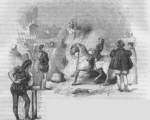
On this day in 1556, Bartholomew Green, a Protestant lawyer, paid the ultimate price for his beliefs: death.
Burned at the stake at Smithfield alongside six others, Green’s story is one of unshakable faith, defiance, and courage in the face of persecution.
But how did this Oxford-educated lawyer end up on the wrong side of Queen Mary I’s laws? What role did secret communions, controversial letters, and his refusal to attend Catholic mass play in his downfall?
Bartholomew Green, or Bartlet Green as he’s sometimes known, was a gentleman and lawyer who found his faith while studying at Oxford. It was there, while listening to lectures by the Protestant theologian Peter Martyr, that Green, as martyrologist John Foxe describes, “saw the true light of God’s gospel.”
[Read More...]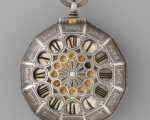
Today, I’m exploring the life of a remarkable yet forgotten craftsman.
On this day in Tudor history, 17th January 1587, Bartholomew Newsam died. He was buried in the church of St Mary-le-Strand, the parish in which he lived and worked. He was in his fifties at his death. His life spanned the reigns of five monarchs: Henry VIII, Edward VI, Lady Jane Grey, Mary I, and Elizabeth I—a time of immense change and innovation.
Newsam was more than just a craftsman—he was a trailblazer in English clockmaking, a skill that was incredibly specialised in Tudor times.
While most clocks were imported from Europe, Newsam stood out as one of the first English clockmakers to gain royal recognition.
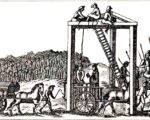
On this day in Tudor history, 11th January 1584, Carter paid the ultimate price after being found guilty of treason. His crime? Printing a book that allegedly encouraged the assassination of Queen Elizabeth I.
William Carter was born in London in around 1548 and was the son of draper John Carter and his wife, Agnes. When he was about fifteen, Carter became apprenticed to John Cawood who had been Queen’s Printer to Mary I and who was joint Queen’s Printer to Elizabeth I. Carter was an apprentice to Cawood for a term of ten years before moving on to become secretary to Nicholas Harpsfield, a man who had been Archdeacon of Canterbury under Cardinal Pole in Mary I’s reign and who had been a zealous promoter of heresy trials of Protestants. He had been imprisoned by Elizabeth I’s government for refusing to swear the oath of supremacy and was still in Fleet prison when Carter became his secretary.
[Read More...]
On this day in Tudor history, 2nd January 1554, Sir Thomas Wyatt the Younger and Sir Peter Carew were summoned to face Queen Mary I’s privy council. The reason? Whispers of a bold plot to stop her marriage to Philip of Spain.
Their conspiracy aimed to replace Mary with her half-sister, Elizabeth, in a coup that spiralled into rebellion. But who betrayed the rebels? And how did Mary rally London to crush the uprising?
[Read More...]
On this day in Tudor history, 24th December, King Henry VIII made his final speech to Parliament (1545); Sir Thomas Cornwallis, comptroller of the household of Mary I and member of Parliament, died (1604); and Christmas Eve was celebrated…
[Read More...]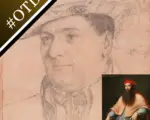
On this day in Tudor history, 15th December, Cardinal Reginald Pole, Mary I’s Archbishop of Canterbury and her chief advisor, was buried at Canterbury Cathedral (1558), and Thomas Parry, Elizabeth I’s comptroller of the household and loyal servant, died of “sheer grief” (1560)…
[Read More...]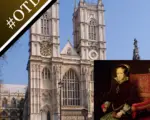
On this day in Tudor history, 14th December, the six-day-old daughter of James V of Scotland became Mary, Queen of Scots, on her father’s death (1542), and Queen Mary I was buried at Westminster Abbey (1558)…
[Read More...]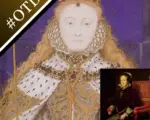
On this day in Tudor history, 17th November, Queen Mary I died at St James’s Palace, London, and her half-sister, Elizabeth, became Queen Elizabeth I. Elizabeth would reign for over forty-four years (1558)…
[Read More...]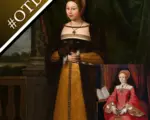
On this day in Tudor history, 18th October, Margaret Tudor, former Queen of Scotland and Henry VII’s eldest daughter, died at Methven Castle; and Elizabeth (future Elizabeth I) finally received permission from her half-sister Mary I to leave court and travel to Hatfield, rather than return to house arrest…
[Read More...]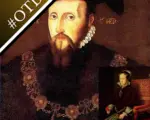
On this day in Tudor history, 13th October, things did not look good for Edward Seymour as his protectorate was abolished and he was thrown off the king’s council (1549); and Mary I asked imperial ambassador Simon Renard to meet with her secretly (1553)…
[Read More...]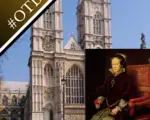
On this day in Tudor history, 1st October, scholar, royal tutor and administrator John Alcock, Bishop of Ely, died at Wisbech Castle; and Mary I, daughter of Henry VIII and Catherine of Aragon, was crowned queen at Westminster Abbey…
[Read More...]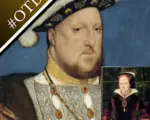
On this day in Tudor history, 30th September, a victorious Henry VIII returned to England after the French surrender of Boulogne; and Mary I’s coronation procession took place in London…
[Read More...]
On this day in Tudor history, 28th September, Mary I and her half-sister, Elizabeth, travelled to the Tower of London to prepare for Mary’s coronation; and Elizabeth I’s favourite, Robert Devereux, 2nd Earl of Essex, strode into the queen’s bedchamber unannounced and saw her without her “mask of youth”…
[Read More...]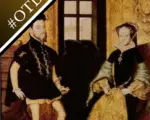
On this day in Tudor history, Queen Anne Boleyn took to her chamber to prepare for the birth of her first child, and Mary I and her husband, Philip II of Spain, rode through London before his departure for the Low Countries…
[Read More...]